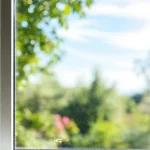Sustainable Innovations Redefining UK Housing
Exploring sustainable housing UK unveils how modern projects prioritize environmental responsibility alongside comfort. Current practices harness green building technologies such as energy-efficient insulation, advanced heat pumps, and rainwater harvesting systems. These innovations reduce waste and resource strain while enhancing durability.
Innovative construction materials are central to this shift. For instance, engineered timber and recycled composites replace traditional concrete and steel, lowering embodied carbon. These materials also improve thermal performance, contributing to energy savings over a building’s life.
Also to discover : How Can We Redesign UK Homes to be More Sustainable?
Notable UK developments illustrate these advances at scale. The BedZED eco-village in London is a pioneer incorporating solar panels, green roofs, and low-carbon materials. Similarly, the Accordia estate in Cambridge integrates natural ventilation and high-performance glazing to minimize energy use.
Green certifications like BREEAM and Passivhaus heavily influence market trends by validating a project’s sustainability credentials. These standards push developers to exceed minimum regulations, resulting in homes that are not only eco-friendly but also more attractive to buyers and tenants.
Also read : What are the best practices for maintaining a historic home in the UK?
Together, these sustainable housing UK efforts demonstrate how green building technologies and innovative construction materials are reshaping the residential landscape, setting new benchmarks for environmental and occupant well-being.
Environmental Benefits and Measurable Outcomes
Exploring the tangible impact of sustainable housing
The rise of eco-friendly homes significantly drives carbon reduction in residential settings. Sustainable housing UK demonstrates that incorporating green building technologies—such as high-efficiency heat pumps, triple-glazed windows, and airtight construction—can cut carbon emissions by up to 60% compared to traditional builds. This metric is crucial for meeting the UK’s climate goals.
Energy efficiency UK housing standards often translate directly to utility savings. Homes optimized with innovative construction materials like cross-laminated timber and recycled insulation reduce heat loss, lowering energy consumption for heating and cooling. Homeowners see meaningful reductions in monthly energy bills, often around 30% less than average UK households, which supports affordability while promoting sustainability.
Beyond emissions and energy, sustainable housing UK contributes to biodiversity and environmental health. Features like green roofs, permeable surfaces, and native planting foster local wildlife and improve air quality. These elements enhance urban ecosystems, complementing the carbon footprint gains with ecological benefits that are measurable through increased species diversity and reduced urban heat islands.
Together, these outcomes illustrate how eco-friendly homes not only advance carbon reduction residential targets but also offer practical savings and environmental resilience essential for thriving UK communities.
Social and Economic Advantages in the UK Context
Balancing affordability with sustainability remains vital in affordable sustainable homes UK initiatives. These homes lower long-term costs by integrating green building technologies such as efficient heating systems and superior insulation, reducing energy bills substantially. This approach tackles fuel poverty by making heating and electricity more accessible to lower-income households.
In terms of community, community impacts green housing extend beyond individual savings. Sustainable housing developments often incorporate shared green spaces and promote social interaction, enhancing neighborhood cohesion and well-being. Access to natural environments linked with innovative construction materials, like timber-framed communal buildings, fosters mental health benefits and encourages neighborly engagement.
Well-being benefits housing are multifaceted. Improved indoor air quality, natural lighting, and comfortable temperatures achieved through airtight construction and advanced glazing reduce respiratory issues and support occupant health. Additionally, these homes offer resilience against climate extremes, an important factor for long-term social stability.
Together, these social and economic factors emphasize that sustainable housing UK is not just an environmental goal but a comprehensive strategy to enhance quality of life, reduce financial strain, and build stronger, healthier communities across the UK.
Real-World Examples and Case Studies
Evidence from pioneering projects shaping the UK’s sustainable housing
UK housing case studies reveal how sustainable housing UK translates theory into practical success. One standout example is the BedZED eco-village in London, which set early benchmarks with renewable energy use and low-carbon materials. Its experience confirms that integrating green building technologies yields both environmental and occupant benefits.
Successful green building projects also include the Accordia estate in Cambridge, demonstrating innovative construction materials like high-performance glazing and engineered timber. Monitoring data shows residents enjoy utility cost reductions averaging 25%, showcasing tangible outcomes sustainable innovation delivers.
Retrofitting older homes forms another critical area. Pilot schemes utilizing triple-glazed windows, insulated walls, and efficient heat pumps reduce energy consumption substantially. These case studies help policymakers and builders assess cost-effectiveness and user satisfaction, accelerating uptake.
Insights from developers emphasize that collaboration between architects, engineers, and residents optimizes results. Likewise, residents report improved comfort and pride in contributing to national carbon reduction residential targets.
Together, these examples highlight how UK housing case studies validate the promise of practical outcomes sustainable innovation offers. By learning from these projects, the sector can further refine strategies to make eco-friendly homes the norm rather than the exception.
Policy, Regulation, and Industry Challenges
Navigating the UK housing policy sustainability landscape involves understanding complex regulations designed to drive greener construction. Current building regulations UK increasingly mandate improved energy efficiency, but fragmented standards can confuse developers aiming to meet ambitious carbon reduction residential goals. This regulatory patchwork sometimes slows adoption of green building technologies.
Key barriers to wider uptake include upfront costs and limited industry expertise. Traditional construction methods dominate, and integrating innovative construction materials requires new skills and supply chains. These challenges create uncertainty, deterring investment and innovation despite government incentives.
Funding and initiatives exist to support sustainable housing UK, such as grants and low-interest loans targeting energy retrofits or new builds. Still, awareness and access can be uneven, particularly for smaller builders and affordable sustainable homes UK projects. Policymakers recognize these obstacles and are working to streamline processes while enhancing training programs.
Addressing these hurdles is essential for unlocking the full potential of green building technologies in the UK. Clearer regulation, improved funding pathways, and workforce development will accelerate sustainable housing adoption. A coordinated approach benefits not only environmental targets but also market confidence and community resilience, reinforcing sustainability as a core pillar of UK housing policy.
Sustainable Innovations Redefining UK Housing
Innovations in sustainable housing UK are reshaping the residential construction landscape through integration of advanced green building technologies and innovative construction materials. Current practices emphasize low-impact materials such as engineered timber and recycled composites that reduce embodied carbon while enhancing durability and thermal performance. These materials contribute to improved energy efficiency and long-term environmental benefits.
Notable UK projects exemplify this progress. For instance, the BedZED eco-village showcases solar energy integration, green roofs, and low-carbon construction methods, embodying sustainable design principles. Likewise, the Accordia estate in Cambridge utilizes high-performance glazing and natural ventilation, illustrating effective application of novel materials and technologies to minimize energy use.
Green certifications like BREEAM and Passivhaus exert a strong market influence by setting rigorous sustainability standards. These certifications encourage developers to adopt cutting-edge green building technologies and innovative construction materials, thereby driving industry-wide improvements. They also provide purchasers with validated assurance of environmental performance, which increases demand for such homes.
By combining material innovation, technology adoption, and certification-driven quality control, sustainable housing UK is establishing new benchmarks that prioritize ecological responsibility alongside occupant comfort and market viability.










